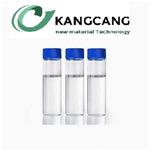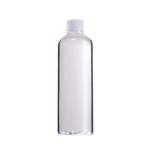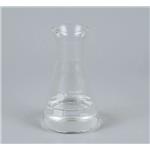Isopropyl acetate
- CAS No.
- 108-21-4
- Chemical Name:
- Isopropyl acetate
- Synonyms
- IPAC;IPrOAc;propan-2-yl acetate;CH3COOCH(CH3)2;Ispropyl acetate;Isopropylacetat;2-propylacetate;2-acetoxypropane;2-Propyl acetate;ACETIC ACID ISOPROPYL ESTER
- CBNumber:
- CB6852740
- Molecular Formula:
- C5H10O2
- Molecular Weight:
- 102.13
- MDL Number:
- MFCD00008877
- MOL File:
- 108-21-4.mol
- MSDS File:
- SDS
| Melting point | -73 °C |
|---|---|
| Boiling point | 88.8 °C |
| Density | 0.872 g/mL at 25 °C(lit.) |
| vapor density | 3.5 (vs air) |
| vapor pressure | 47 mm Hg ( 20 °C) |
| FEMA | 2926 | ISOPROPYL ACETATE |
| refractive index |
n |
| Flash point | 62 °F |
| storage temp. | Store below +30°C. |
| solubility | 1 M HCl: soluble50mg/mL, clear to slightly hazy, colorless |
| form | Liquid |
| color | Clear colorless |
| Odor | Pleasant, fruity; nonresidual. |
| Odor Threshold | 0.16ppm |
| explosive limit | 1.8%, 37°F |
| Odor Type | ethereal |
| Evaporation Rate | 3 |
| Water Solubility | 2.90 g/100 mL |
| FreezingPoint | -73.4℃ |
| Sensitive | Moisture Sensitive |
| JECFA Number | 305 |
| Merck | 14,5205 |
| BRN | 1740761 |
| Exposure limits | TLV-TWA 250 ppm (~950 mg/m3) (ACGIH, MSHA, and OSHA); TLV-STEL 310 ppm (~1185 mg/m3) (ACGIH); IDLH 16,000 ppm (NIOSH). |
| Stability | Stable. Flammable - note low flash point. Incompatible with strong oxidizing agents, strong acids, nitrates, alkali metals. May attack some plastics and rubber. |
| LogP | 1.03-1.18 at 20℃ |
| Substances Added to Food (formerly EAFUS) | ISOPROPYL ACETATE |
| FDA 21 CFR | 172.515; 175.105; 177.1200 |
| CAS DataBase Reference | 108-21-4(CAS DataBase Reference) |
| EWG's Food Scores | 1 |
| FDA UNII | 1Y67AFK870 |
| NIST Chemistry Reference | Acetic acid, 1-methylethyl ester(108-21-4) |
| EPA Substance Registry System | Isopropyl acetate (108-21-4) |
SAFETY
Risk and Safety Statements
| Symbol(GHS) |   GHS02,GHS07 |
|||||||||
|---|---|---|---|---|---|---|---|---|---|---|
| Signal word | Danger | |||||||||
| Hazard statements | H225-H319-H336 | |||||||||
| Precautionary statements | P210-P233-P261-P280-P303+P361+P353-P370+P378 | |||||||||
| Hazard Codes | F,Xi | |||||||||
| Risk Statements | 11-36/37/38-67-66-36 | |||||||||
| Safety Statements | 16-26-36-33-29 | |||||||||
| RIDADR | UN 1220 3/PG 2 | |||||||||
| WGK Germany | 1 | |||||||||
| RTECS | AI4930000 | |||||||||
| Autoignition Temperature | 894 °F | |||||||||
| TSCA | Yes | |||||||||
| HazardClass | 3 | |||||||||
| PackingGroup | II | |||||||||
| HS Code | 29153900 | |||||||||
| Toxicity | LD50 orally in rats: 6.75 g/kg (Smyth) | |||||||||
| IDLA | 1,800 ppm | |||||||||
| NFPA 704 |
|
Isopropyl acetate price More Price(43)
| Manufacturer | Product number | Product description | CAS number | Packaging | Price | Updated | Buy |
|---|---|---|---|---|---|---|---|
| Sigma-Aldrich | W292605 | Isopropyl acetate ≥99%, FCC | 108-21-4 | 1kg | $76.5 | 2024-03-01 | Buy |
| Sigma-Aldrich | W292605 | Isopropyl acetate ≥99%, FCC | 108-21-4 | 9kg | $311 | 2024-03-01 | Buy |
| Sigma-Aldrich | W292605 | Isopropyl acetate ≥99%, FCC | 108-21-4 | 20kg | $565 | 2024-03-01 | Buy |
| Sigma-Aldrich | PHR2109 | Isopropyl acetate Pharmaceutical Secondary Standard; Certified Reference Material | 108-21-4 | 3X1.2ML | $185 | 2024-03-01 | Buy |
| Sigma-Aldrich | 90871 | Isopropyl acetate analytical standard | 108-21-4 | 5ML | $102 | 2024-03-01 | Buy |
Isopropyl acetate Chemical Properties,Uses,Production
Chemical Properties
Isopropyl acetate is a colourless liquid with an intense, fruity odor. On dilution, it has a sweet apple-like flavor. Miscible with most organic solvents such as alcohols, ketones and ethers. 2.9% (w/w) soluble in water at 20°C. Synthesized by direct acetylation of isopropyl alcohol in the presence of various catalysts: concentrated H2S04, diethyl sulfate, chlorosulfonic acid, and boron trifluoride.
Physical properties
Clear, colorless liquid with an aromatic odor. Experimentally determined detection and recognition odor threshold concentrations were 2.1 mg/m3 (500 ppbv) and 3.8 mg/m3 (910 ppbv), respectively (Hellman and Small, 1974).
Occurrence
Reported found in pineapple, pear, cocoa, apple, banana, black currants, grapes, melons, strawberry, cheddar cheese, beer, white wine, red wine, cocoa, honey, soybean, yellow passion fruit, beans, plum brandy and nectarines
Uses
Isopropyl acetate is used as a solvent for nitrocellulose, plastics, oils, and fats, and as a flavoring agent. Isopropyl Acetate is a widely used chemical solvent in organic and industrial syntheses. Also used in the dissolution of gallstones. Environmental contaminants; Food contaminants.
Application
Isopropyl acetate is a solvent in chemical industry, especially for cellulose, plastics, waxes, resins, gums, paints, oil and fats. and also as flavoring agent. It is an active component of perfumes and printing inks. It is also employed as an extractant for the preparation of antibiotics, vitamins and hormones.
Definition
ChEBI: Isopropyl acetate is a branched-chain saturated fatty acid anion that is the conjugate base of isovaleric acid; reported to improve ruminal fermentation and feed digestion in cattle.
Preparation
Isopropyl acetate is prepared from propylene and anhydrous acetic acid in the presence of a catalyst . It may also be produced by direct acetylation of isopropyl alcohol in the presence of various catalysts; concentrated H2SO4, diethyl sulfate, chlorosulfonic acid and boron trifluoride.
Aroma threshold values
Detection; 1.7 to 4.4 ppm
Taste threshold values
Taste characteristics at 60 ppm: ethereal, tutti-frutti, with a fruity apple and banana nuance
Synthesis Reference(s)
The Journal of Organic Chemistry, 39, p. 3728, 1974 DOI: 10.1021/jo00939a026
General Description
Isopropyl acetate appears as a clear colorless liquid. Flash point 40°F. Vapors are heavier than air. Contact with the material may irritate skin, eyes or mucous membranes. May be toxic by ingestion, inhalation and skin absorption. Used as a solvent.
Air & Water Reactions
Highly flammable. Less dense than water and slightly soluble in water.
Reactivity Profile
Isopropyl acetate is an ester. Esters react with acids to liberate heat along with alcohols and acids. Strong oxidizing acids may cause a vigorous reaction that is sufficiently exothermic to ignite the reaction products. Heat is also generated by the interaction of esters with caustic solutions. Flammable hydrogen is generated by mixing esters with alkali metals and hydrides. Isopropyl acetate can react vigorously with nitrates, strong oxidizers, strong alkalis and strong acids. Isopropyl acetate may also attack some forms of rubber, plastics and coatings. .
Health Hazard
Isopropyl acetate is an irritant to the eyes,nose, and throat. Liquid irritates eyes but causes no serious injury; may cause dermatitis; no serious effects if swallowed. The acute toxicity in laboratory animals was low. Exposure to highconcentrations in air or ingestion can produce narcotic effects. A 4-hour exposure to aconcentration of 32,000 ppm in air was fatalto rats (ACGIH 1986). The oral LD50 valuein rats is in the range 6000 mg/kg.
Fire Hazard
HIGHLY FLAMMABLE: Will be easily ignited by heat, sparks or flames. Vapors may form explosive mixtures with air. Vapors may travel to source of ignition and flash back. Most vapors are heavier than air. They will spread along ground and collect in low or confined areas (sewers, basements, tanks). Vapor explosion hazard indoors, outdoors or in sewers. Runoff to sewer may create fire or explosion hazard. Containers may explode when heated. Many liquids are lighter than water.
Flammability and Explosibility
Highly flammable
Source
Identified among 139 volatile compounds identified in cantaloupe (Cucumis melo var. reticulates cv. Sol Real) using an automated rapid headspace solid phase microextraction method (Beaulieu and Grimm, 2001).
Environmental Fate
Chemical/Physical. Hydrolyzes in water forming isopropyl alcohol and acetic acid (Morrison
and Boyd, 1971). The estimated hydrolysis half-life at 25 °C and pH 7 is 8.4 yr (Mabey and Mill,
1978).
At an influent concentration of 1,000 mg/L, treatment with GAC resulted in an effluent
concentration of 319 mg/L. The adsorbability of the carbon used was 137 mg/g carbon (Guisti et
al., 1974).
Purification Methods
Wash the acetate with 50% aqueous K2CO3 (to remove acid), then with saturated aqueous CaCl2 (to remove any alcohol). Dry it with CaCl2 and fractionally distil it. [Beilstein 2 IV 141.]
Isopropyl acetate Preparation Products And Raw materials
Raw materials
Preparation Products
1of8
| Supplier | Tel | Country | ProdList | Advantage | |
|---|---|---|---|---|---|
| Shandong Dexiang International Trade Co., Ltd | 15662695772;+8615662691337 | sales006@dexiangchemical.com | China | 998 | 58 |
| Henan Bao Enluo International TradeCo.,LTD | +86-17331933971 +86-17331933971 | deasea125996@gmail.com | China | 2503 | 58 |
| Shaanxi Haibo Biotechnology Co., Ltd | +undefined18602966907 | qinhe02@xaltbio.com | China | 1000 | 58 |
| Hebei Kangcang new material Technology Co., LTD | +8619133911216 | fanfan@kangcang.com.cn | China | 340 | 58 |
| Henan Tianfu Chemical Co.,Ltd. | +86-0371-55170693 +86-19937530512 | info@tianfuchem.com | China | 21691 | 55 |
| career henan chemical co | +86-0371-86658258 | sales@coreychem.com | China | 29914 | 58 |
| SHANDONG ZHI SHANG CHEMICAL CO.LTD | +86 18953170293 | sales@sdzschem.com | China | 2931 | 58 |
| Hebei Guanlang Biotechnology Co., Ltd. | +86-19930503282 | alice@crovellbio.com | China | 8823 | 58 |
| Xiamen AmoyChem Co., Ltd | +86-592-6051114 +8618959220845 | sales@amoychem.com | China | 6387 | 58 |
| Hubei xin bonus chemical co. LTD | 86-13657291602 | linda@hubeijusheng.com | CHINA | 22968 | 58 |
View Lastest Price from Isopropyl acetate manufacturers
| Image | Update time | Product | Price | Min. Order | Purity | Supply Ability | Manufacturer | |
|---|---|---|---|---|---|---|---|---|
 |
2024-04-26 | Isopropyl acetate
108-21-4
|
US $20.00-10.00 / kg | 1kg | 98% | 20 | Hebei Kangcang new material Technology Co., LTD | |
 |
2024-04-12 | Isopropyl acetate
108-21-4
|
US $0.00 / kg | 1kg | 99% | 2000ton | Shaanxi Haibo Biotechnology Co., Ltd | |
 |
2023-08-12 | Isopropyl acetate
108-21-4
|
US $10.00 / kg | 1kg | 99.99% | 50000tons | Henan Bao Enluo International TradeCo.,LTD |
-

- Isopropyl acetate
108-21-4
- US $20.00-10.00 / kg
- 98%
- Hebei Kangcang new material Technology Co., LTD
-

- Isopropyl acetate
108-21-4
- US $0.00 / kg
- 99%
- Shaanxi Haibo Biotechnology Co., Ltd
-

- Isopropyl acetate
108-21-4
- US $10.00 / kg
- 99.99%
- Henan Bao Enluo International TradeCo.,LTD





